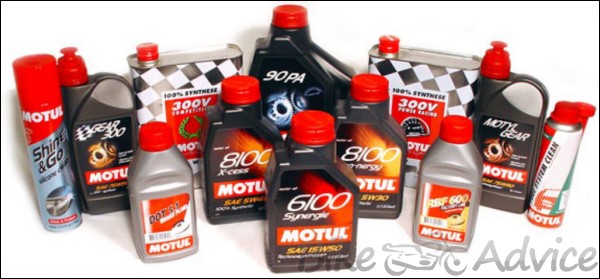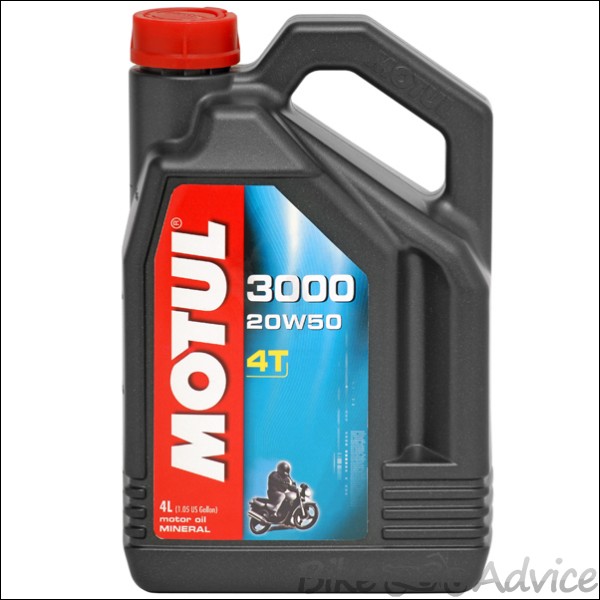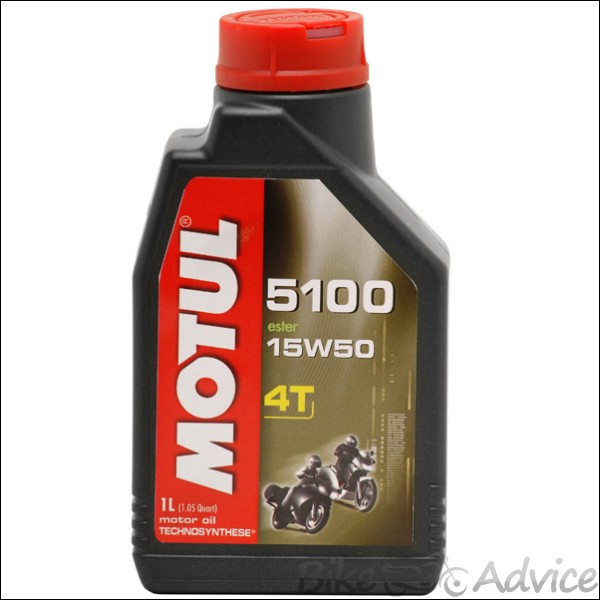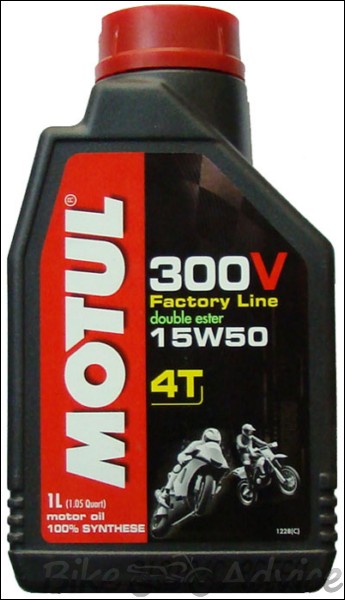We discuss – Types of Engine oils, drain intervals, where to buy etc in this story…
All of us know what is an Engine Oil as every bike needs it to perform its duties flawlessly. Here is a quick refresher on what are the types of engine oils available in the market and some basic maintenance tips.
What is the use of Engine Oil? When Fuel can ignite, why add oil to motorcycle?
Engine oil is added to the engine to avoid metal parts grinding one against each other and tearing each one apart due to friction generated by moving metal parts. Engine Oil also plays a vital role in transferring intense heat generated in the engine during the combustion sequence by cooling the moving metal parts.
Engine Oil also cleans the engine from chemical deposits such as Silicon oxide, acids and other build up’s such as carbon deposits and engine scraps inside the engine. It keeps the moving parts of the engine coated with a thin film of oil that drastically reduces friction.
To be put in one single line “Engine is the heart of your steed where oil is the blood that makes it work”.

Bike Maintenance: Taken from the Engine Side
Washing and waxing your bike will keep the outer part of your motorcycle clean and shiny but what about the internals – the most important bits that actually run the motorcycle! Here are a few basic tips that will keep the bike’s heart in the best of health.
Check Oil Regularly:
Low Engine Oil levels can cause serious damage to your bike’s engine and it may be a symptom of some major mechanical issues. So, check your oil levels weekly and always before any long trips. Also, always keep a top-up can of oil with you when you are on a long trip. Also motorcycles do eat up a minor amount of engine oil during running, so do not bother about it. However, if the amount of engine oil consumed by the motorcycle is significantly high, take it to the service station as soon as you find it out. If left with low oil levels, you may face issues like over heating and damage to key components and if levels get critically low, everything will eventually grind to a complete halt – fondly called as Engine Seizure!
How to Check Oil Level:
Park your bike on centre stand (or a paddock if it is not equipped with one). Always check oil levels 5-10 minutes after you have parked it. Check the oil level through the glass panel on the side of your engine or on the dipstick if your bike has one. The engine oil level should be close to the maximum mark, but not above it. If it is below the minimum mark, top it up with extra oil.
When to Change Engine Oil?
The manufacturer’s bible aka manual will tell you the oil change intervals for your motorcycle. Consider them as the maximum kilometers you can run your motorcycle with the same engine oil. In real world scenarios you should understand that engine oil change is dependent on a lot of factors.
- Riding conditions that require frequent oil changes
- Your style of riding ie you are a habitual hard rev-er.
- Riding in Dusty or humid conditions.
- Stop-start riding in city traffic conditions will puts a lot stress on the engine that will eventually affect the engine oil.
- Using poor quality fuel, causes oil contamination and sludge.

Maintenance Tips for a Healthier Engine
- Keep the oil level close to the ‘max’ (maximum) level – but not over fill it. Never run below the ‘min’ (minimum) mark.
- More oil in the tank means higher resistance and improved engine safeguard. It doesn’t mean that you need to fill till the brim.
- Don’t be concerned about the engine oil turning black. But remember do not let the oil turn pitch black that smells.
- If storing your bike away for a longer period, e.g. over cold weather, change your oil beforehand and run the engine to circulate it. Oil has powerful anti-corrosion additives which fill the total airspace of the engine, and even protect parts not covered with oil.
- Always follow the manufacturer’s recommendation in your handbook with regard to oil quality. But note, often the recommendation is a bare minimum and does not necessarily refer to the best product available.
Types of Engine Oils
Mineral oils:
Mineral oil is one of the N numbers of by-products made from petroleum; mineral oil is extracted from crude oil (petroleum). It is further refined for use in different purposes such as removing make-up, to remove heavy greasy stuff from face, medicine (such as Vaseline and petroleum Jelly), and used as engine oil. Mineral oil is the most used engine oil which is supplied by manufacturers. This is the cheapest and the most basic quality of oil your motorcycle could use and hence drain intervals are generally low.

It is often recommended that you stick to mineral oils till your motorcycle crosses its running-in period as it helps the engine and other internal components to settle down.
In general I have found that mineral oils are fairly good upto 2000 to 2500 kms. As I said earlier, they are cheap as compared to semi synthetic or synthetic oils.
Amazon generally runs good offers on engine oils. Check here for commonly available mineral oils they have. Range starts from Rs 200-250. We recommend Motul 3000 4T Plus or Motul 3100 for motorcycles.
Semi Synthetic Oils:
It is a composition of mineral and synthetic oils and hence you can have the advantages of both of them – enhanced drain intervals and relatively cheaper prices.

In generic conditions, we can use semi-synthetic engine oils uptill 3000 to 4000 kms. They cost more than minerals but a lot lesser than fully synthetic oils.
Here is a list of some semi-synthetic engine oils that Amazon has in stock. Range starts from as low as Rs 250 a liter for HP Racr4. We have found Motul 5100 to be a VFM buy as it provides a good life as well as costs reasonable.
Fully Synthetic Oils:
Synthetic Oil is a lubricant consisting of chemical compounds which are artificially made (synthesised) from compounds other than crude oil (petroleum). The actual cost could be triple or more than that of mineral oil.

It is recommended to use after initial run-in period and can have drain intervals of over 6000 kms easily.
You can get synthetic engine oils from around Rs 400. Amazon is selling Shell Advance Ultra at around Rs 590 here. Motul offers two sub brands – 7100 and 300V. If you can get 300V, nothing like it but 7100 also does its job real well.
How to select Engine oil for my bike?
For 90% of the motorcyclists this job was handled either by local mechanic or the so called authorised service centers. They select and recommend oil brands according to company recommendation or their own preference sometimes based of commission /cost benefit they get. Remember the letter W in the oil grade Example 20W-50. In this example the number before W stands for cold viscosity rating of the oil and number after W is the hot viscosity.
Viscosity is nothing but the resistance of the flow of fluid. For example water has low viscosity and Honey has higher viscosity. The 20W-50 grade engine oil behaves like 20 rated single grade oil when in cold, but doesn’t thin any more than 40-rated single grade oil when it reaches higher temperatures. The lower the “cold” number (you can assume that W is for winter), the easier the engine will turn over when starting in cold climates.
We have explained engine oil grades here in a very simple language by taking examples of tomato ketchup and regular motorcycles like Pulsar 220.
This is a very basic guideline on engine oils and what and when to change. We have tried to keep in simple in a hope that you will have a better understanding. In case you are still confused with something, even after reading both our informative articles on engine oils, drop us a question at our Facebook page.
Related – Slipper Clutch – What Is It & How Does It Work
if you live in a non-metro and find sourcing good quality engine oils tough, you can buy them from Amazon and they do run good offers often.
If you like the information do share it across to your friends 🙂


